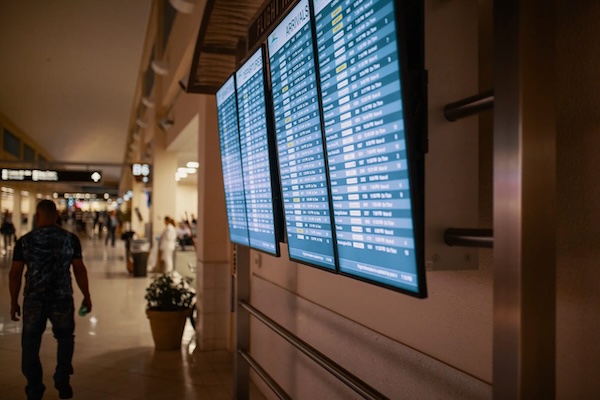Activists in Majorca have intensified efforts against overtourism, threatening a blockade at Palma airport. The concerns highlight both environmental and social impacts.
Approximately 10,000 protestors are voicing issues like housing market inflation and resource depletion caused by the influx of tourists. Their movement is growing.
About 10,000 demonstrators flooded the streets of Palma, Majorca, over the weekend, advocating for limitations on tourism. The movement, ignited by complaints surrounding Airbnb-style rentals, water scarcity due to swimming pools, and road congestion from holidaymakers’ vehicles, has gained momentum. These protests signify a growing unrest against the region’s booming tourism sector, which many claim is infringing upon residents’ quality of life.
The ‘Less Tourism, More Life’ group has announced plans to blockade Palma Son Sant Joan airport, Spain’s third-largest, handling over 31 million passengers last year. Activists are calling for action, threatening potential traffic gridlocks during peak summer months to disrupt operations. Such measures reflect increasing frustration.
The vigorous campaign against tourism illustrates deep-seated environmental and social concerns among island inhabitants. Their arguments include the wastage of precious natural resources like water and the inflation of property prices, which they attribute to the rush of short-term rentals. Protestors argue these issues not only degrade the environment but also hurt the socio-economic fabric of the local community.
The Balearic Islands’ tourism minister has criticised the activists’ plans, classifying the proposal as criminal. He referenced a similar blockade at El Prat airport in 2019, pledging that police would manage the situation if necessary. This highlights the increasing tensions between grassroots movements and governmental authorities over tourism policy.
Amidst the turmoil, Maria Frontera, the head of the island’s Hoteliers Federation, has emphasised the necessity of a strategic approach to address tourist overcrowding. Frontera argues that decisions should be driven by objective data rather than specific ideologies, advocating for a methodical transformation process to ensure sustainable tourism.
Majorca is not alone in its struggle. Similar protests occurred in the Canary Islands, where demonstrations were held to demand restrictions on tourist arrivals. The unrest underscores the broader regional demand for a recalibration of tourism policies, focusing on residents’ well-being over tourism growth.
These protests and blockades could substantially influence the region’s tourism strategies. Authorities might be compelled to devise a balance between the economic influx brought by tourists and the preservation of the local lifestyle. This conflict forces stakeholders to rethink traditional approaches to tourism management amidst growing local opposition.
The activism in Majorca reflects a significant shift towards sustainable tourism. Authorities need to balance tourist influx with the preservation of local life.
Without effective strategic responses, tensions between residents and the tourism industry are likely to persist, affecting the region’s economic and social landscape.

